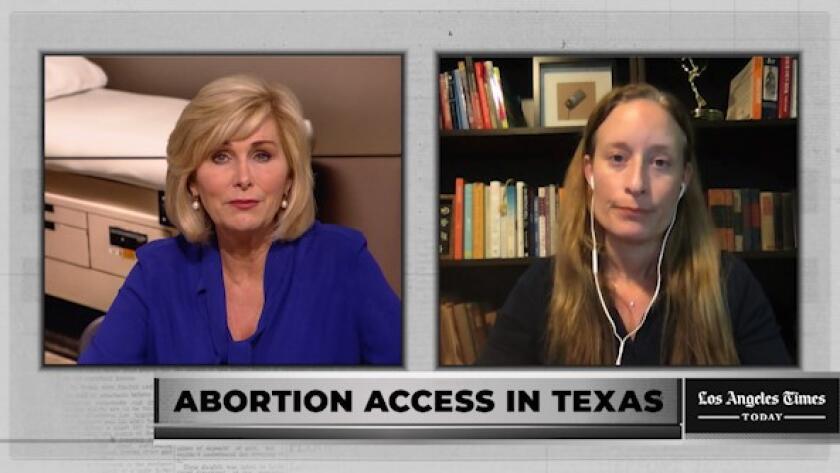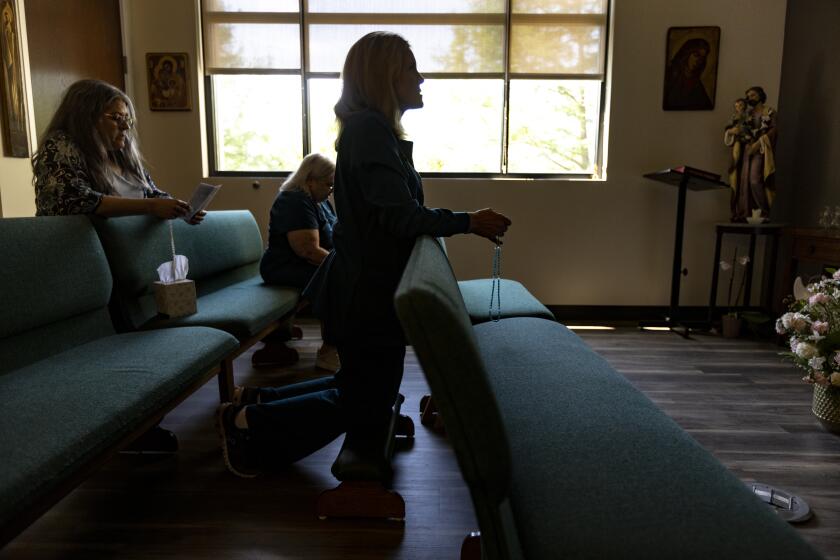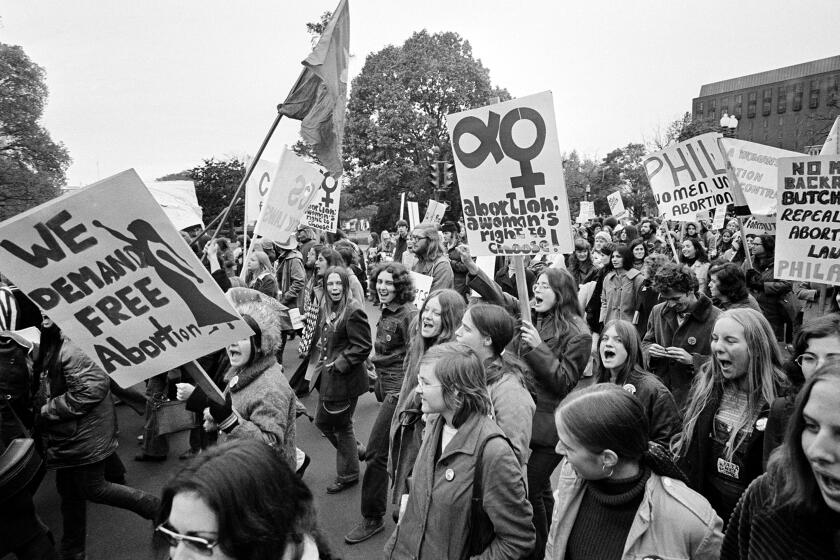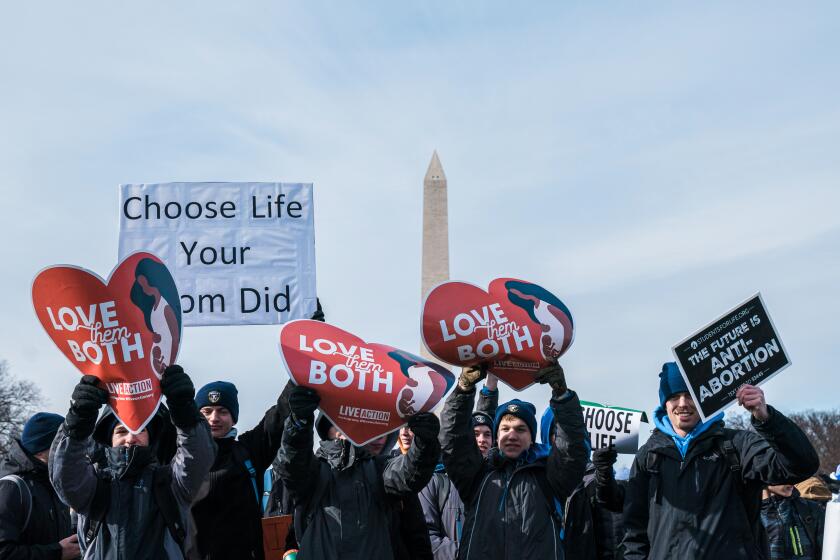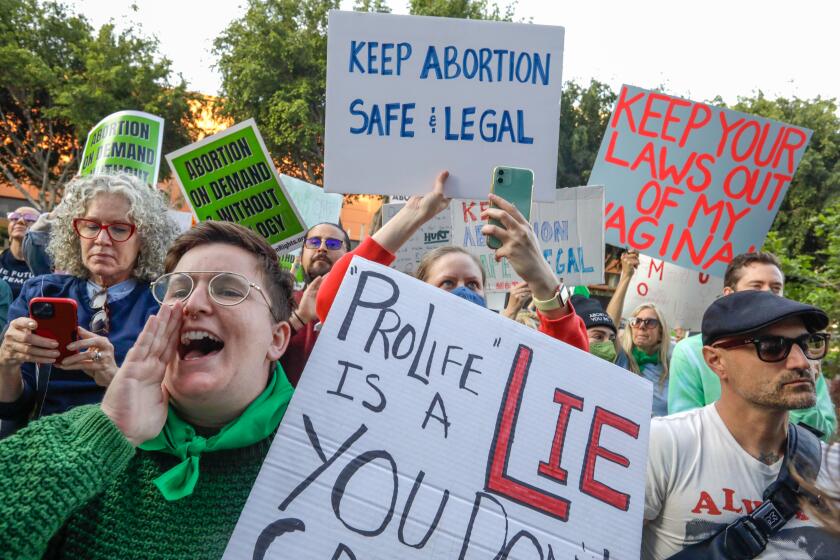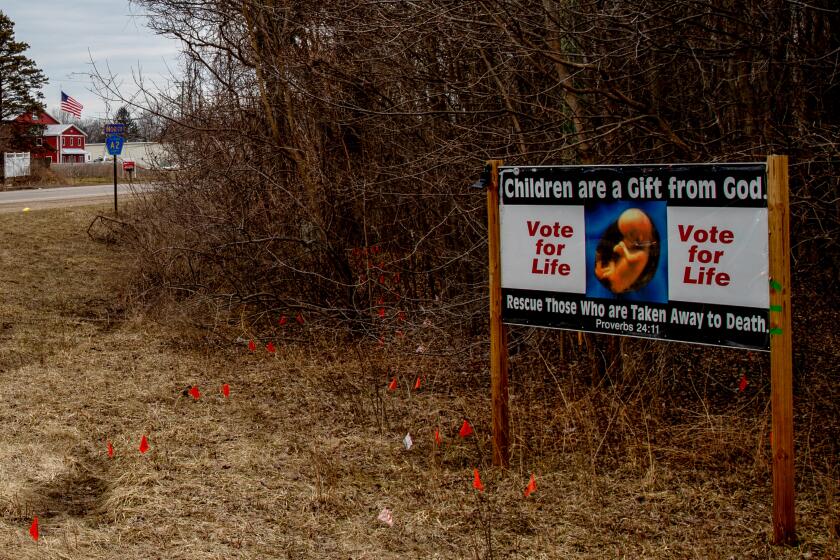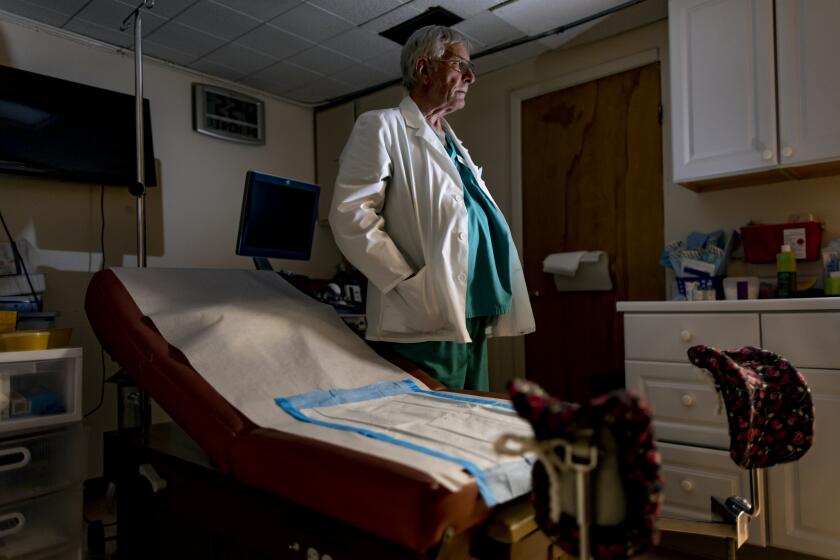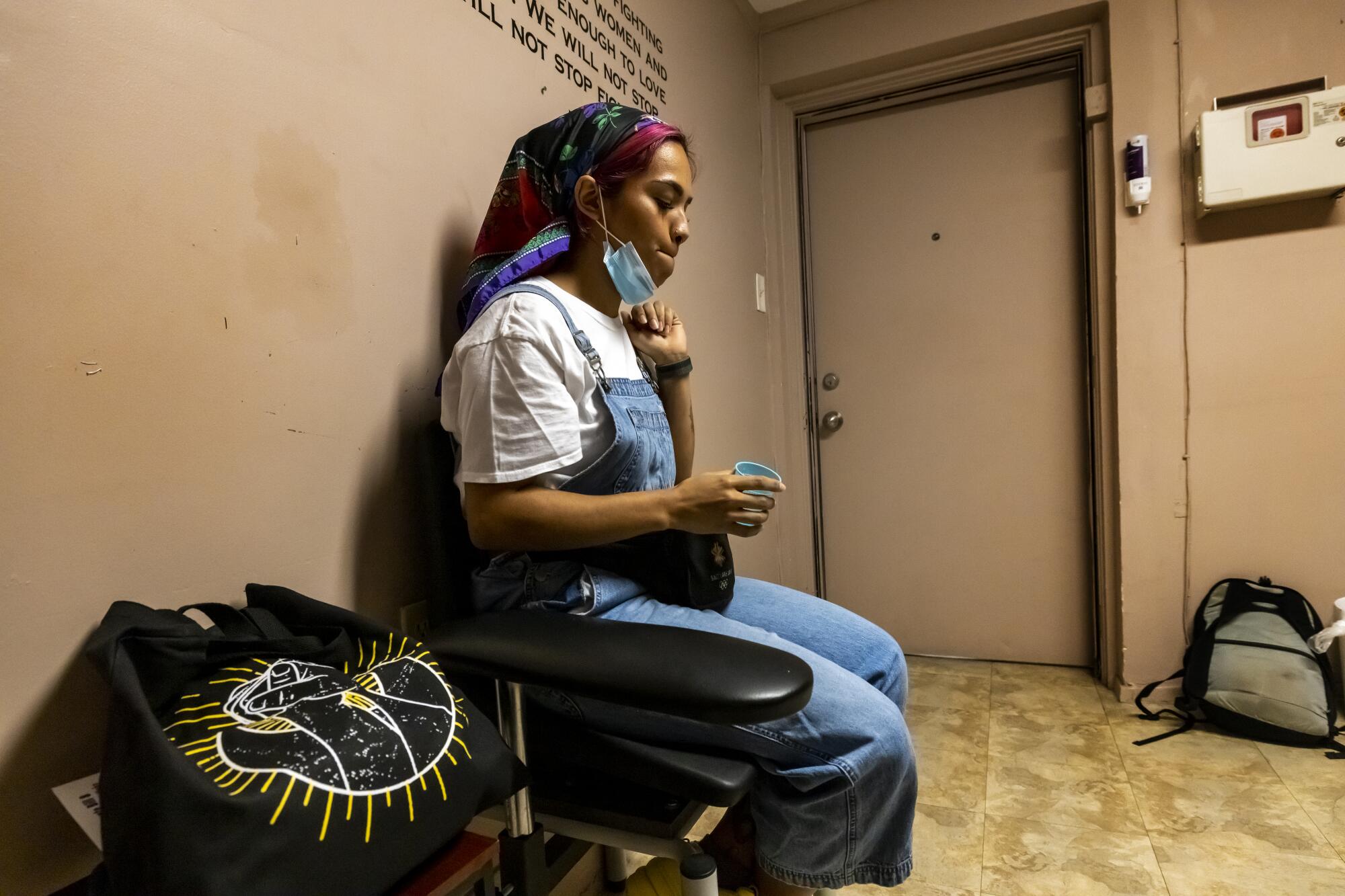
McALLEN, Texas â The patient slid onto the examination table as the doctor ran through her standard list of questions.
Most recent period? Any previous abortions? Medication or surgery? Any complications?
An assistant readied an ultrasound wand as the patient lifted her shirt. She wasnât worried whether she was pregnant â she had already figured that out with four home tests.
What she and the doctor needed to know was how many weeks.
If the U.S. Supreme Court eliminates the constitutional right to abortion by overturning Roe vs. Wade â as it is widely expected to do in coming weeks â Texas and at least 25 other conservative states are likely to ban most abortions.
The Future of Abortion
This is one in a series of occasional stories about the state of abortion as Roe vs. Wade faces its most serious challenge.
But already in Texas, low-income Latinas, who have long made up the vast majority of patients at Whole Womanâs Health of McAllen, the only abortion clinic for hundreds of miles along the border, face major obstacles when it comes to ending unwanted pregnancies.
Last year, Texas enacted the strictest abortion law in the country. With no exception for rape or incest, the so-called heartbeat law effectively bans the procedure after fetal cardiac activity is detected, usually at about six weeks, before many women even realize theyâre pregnant.
Wearing a âReproductive Freedom Fighterâ T-shirt, Dr. Blair Cushing eyed the ultrasound monitor, which was positioned so her 26-year-old patient could also watch.
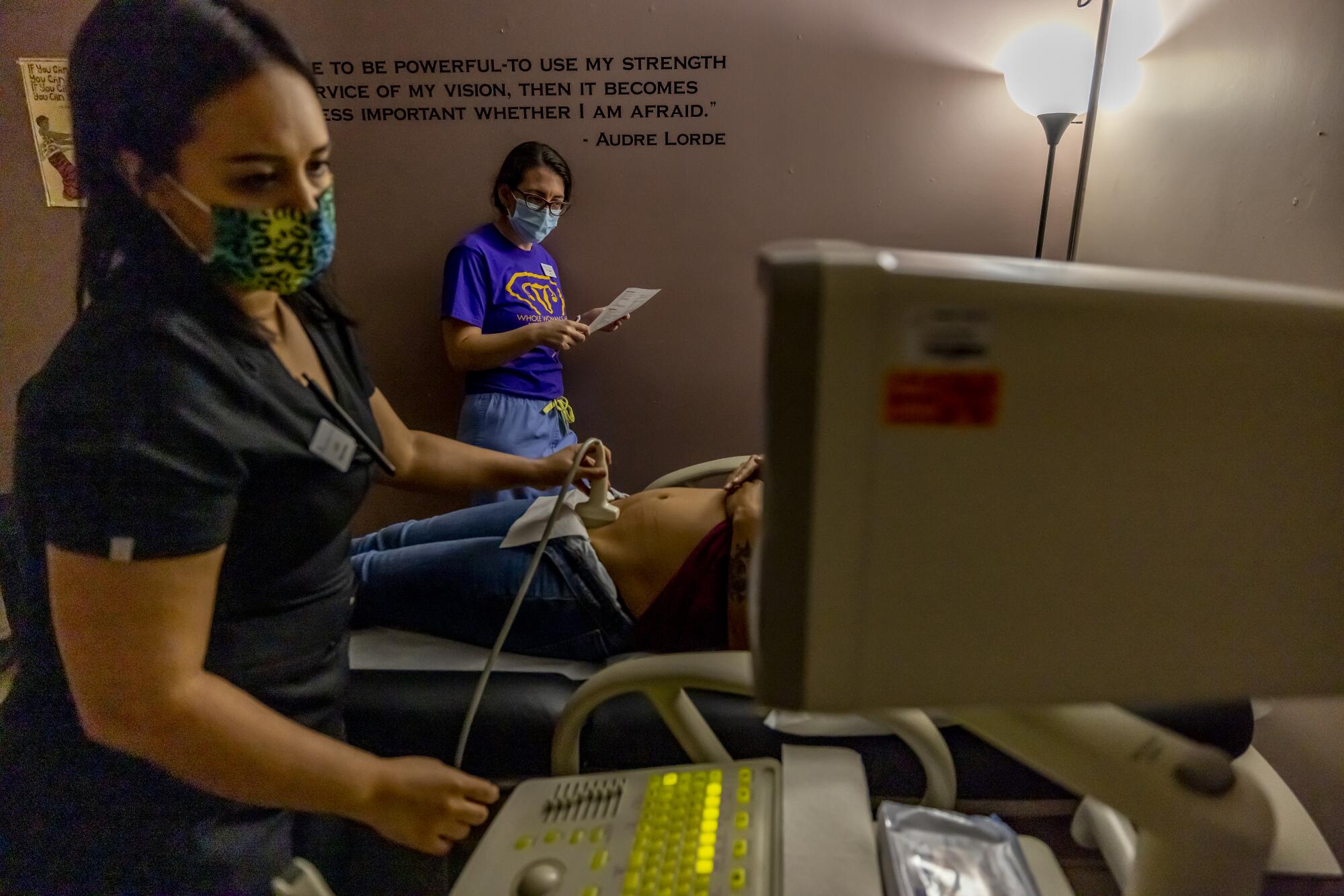
Krystal â one of several women who asked to be identified by their first name for this story â worried that she had come to the clinic too late, that she would have to seek treatment out of state or buy abortion medication in Mexico.
âWhere am I going to go?â she wondered.
If the ultrasound showed fetal cardiac activity, it would be too late for Krystal to legally get an abortion in Texas.
The Rio Grande Valley is home to 1.3 million people, 90% of them Latino. A third of the population lives in poverty, and because Texas opted out of Medicaid expansion, many donât have access to healthcare.
The patients at Whole Womanâs Health of McAllen, 10 miles north of Mexico, are typical of those seeking abortions nationwide: low-income women of color.
The clinic operated under a different name for more than three decades until 2004, when it became part of Whole Womanâs Health. The network of independent clinics succeeded in persuading the Supreme Court to throw out some of Texasâ abortion restrictions in 2016 but failed in its more recent challenge of the âheartbeat law.â
The McAllen clinic has struggled to find local doctors willing to perform abortions.
Cushing flies in from Central California twice a month for three days at a time. On the first day, she performs ultrasounds. Those who qualify usually get their abortions on the second or third day.
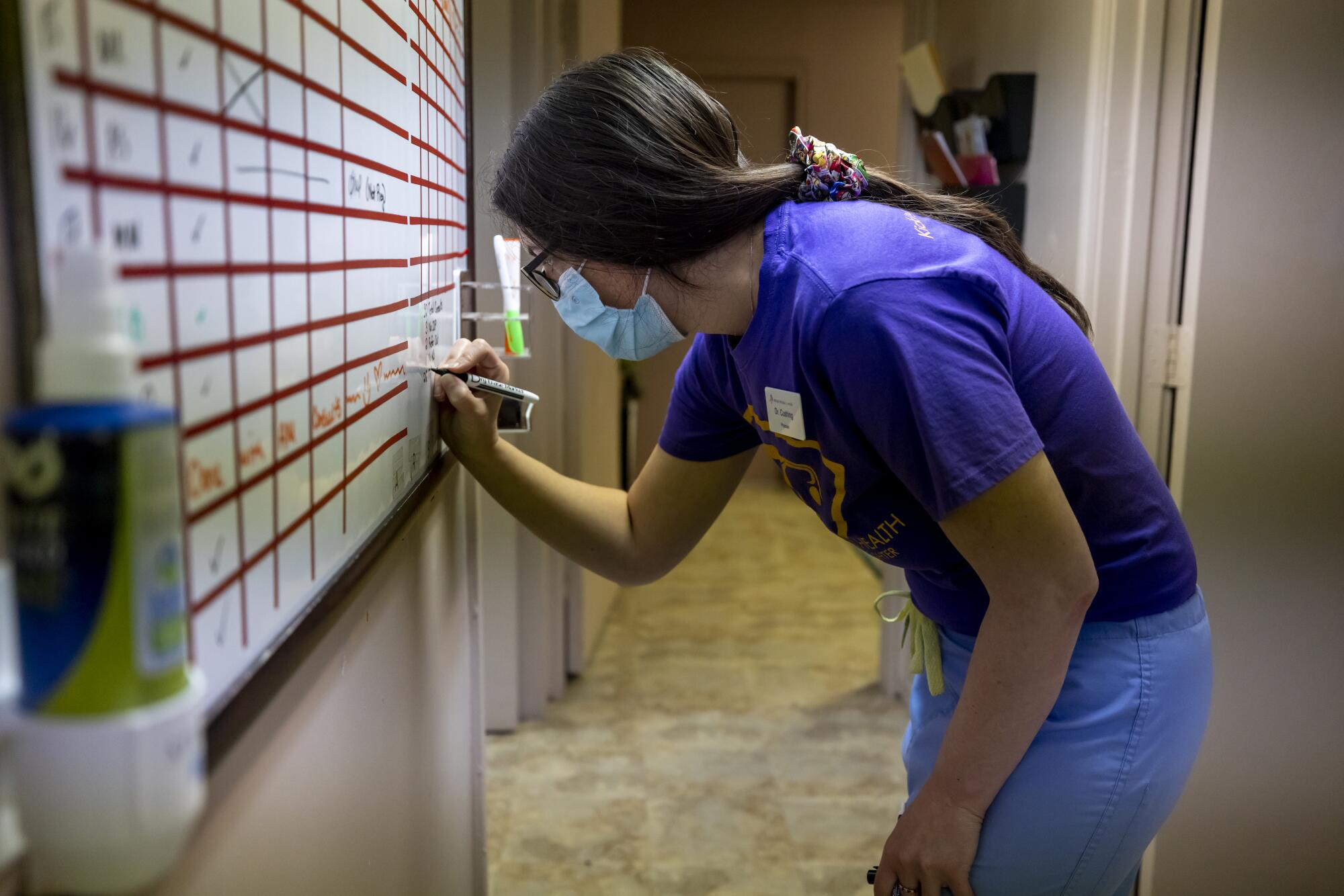
She said that since the latest Texas law took effect, she has had to turn away about 40% of the women seeking abortions.
The new law has sown enormous confusion among her patients. Some call or arrive at the clinic unsure whether abortion is still legal in Texas or whether having an abortion would put their lives at risk.
Itâs a striking contrast to Cushingâs practice in Central California. There she also serves a largely poor Latino population, but private insurance and Medi-Cal are required to cover the procedure.
âI donât have patients who say, âAm I going to die?ââ she said. âBut I do in Texas.â
Cushing knows that for women seeking abortions in the Rio Grande Valley, the McAllen clinic isnât necessarily the first place they turn.
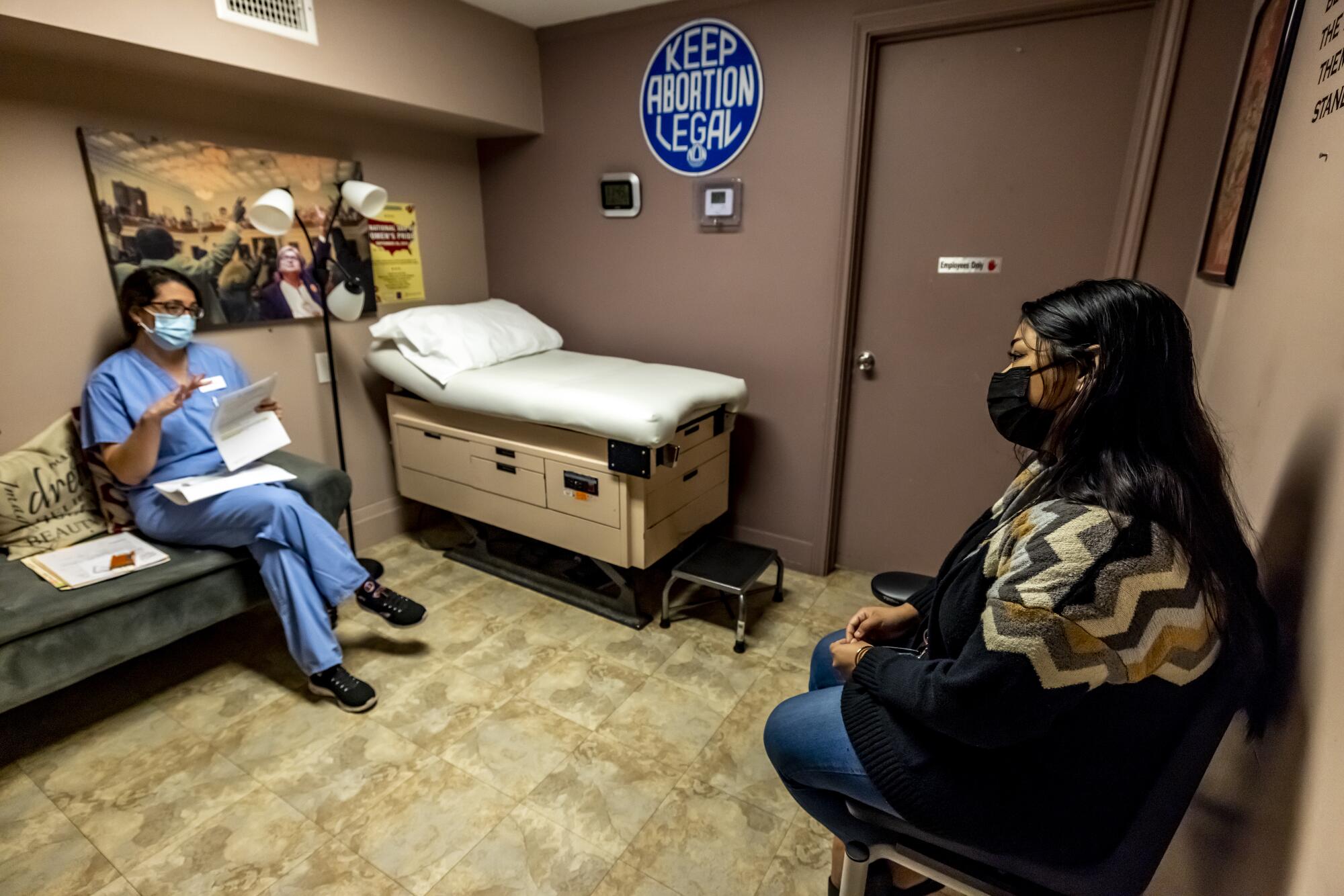
âWeâre poor in this area, so a lot of us donât think, whatâs the safest way to do it?â explained a 24-year-old named LucĂa who works for a teaching certification program in nearby Edinburg. âNot having insurance, youâre scared youâre going to have to pay too much.â
When she recently became pregnant despite having an intrauterine device, LucĂa considered crossing the border to buy abortion medication in Mexico.
The drug misoprostol is sold over the counter there and can legally be brought back to the United States. Prices ranged from $20 to $150 at pharmacies in the border city of Nuevo Progreso late last month. It is effective if used correctly, but pharmacies often provide inaccurate instructions that not only fail to induce an abortion, but can cause bleeding and other complications.
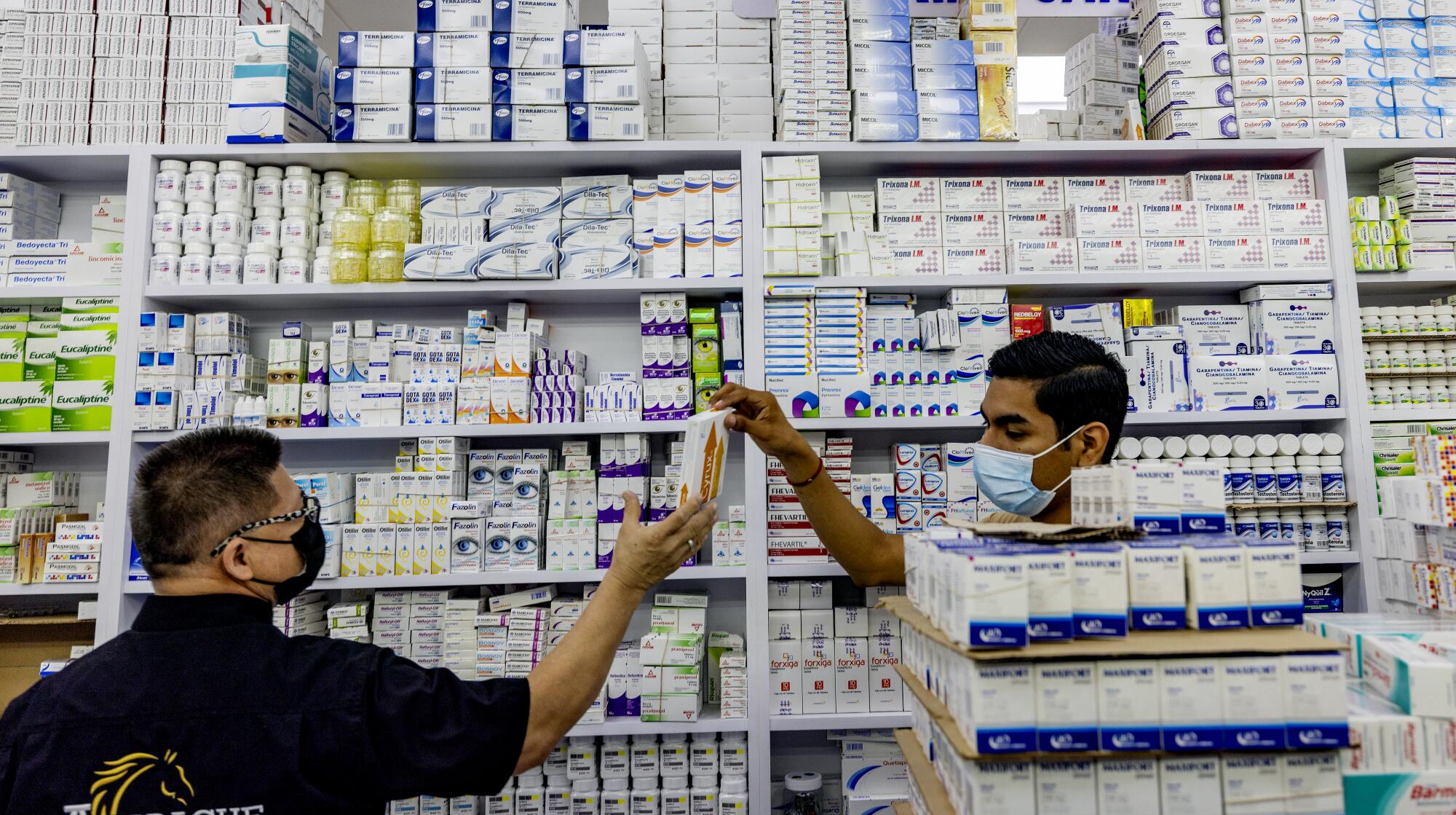
âJump up and down to expel the embryo,â said one pharmacy clerk.
LucĂa said that one of her sisters bled excessively last year after taking abortion pills she bought in Mexico. That experience â plus worries about how her IUD could complicate things â ultimately convinced LucĂa that the clinic in McAllen was her safest option.
An ultrasound with Cushing late last month showed she was five weeks pregnant.
The clinic could remove her IUD for $50, then provide a medication abortion for $700, which would be covered by the nonprofit National Abortion Federation.
LucĂa sobbed as she explained that she would be having an abortion the next day â before the legal window closed. It all felt so rushed.
âIf I had a little more time, I wouldnât be crying right now,â she said.
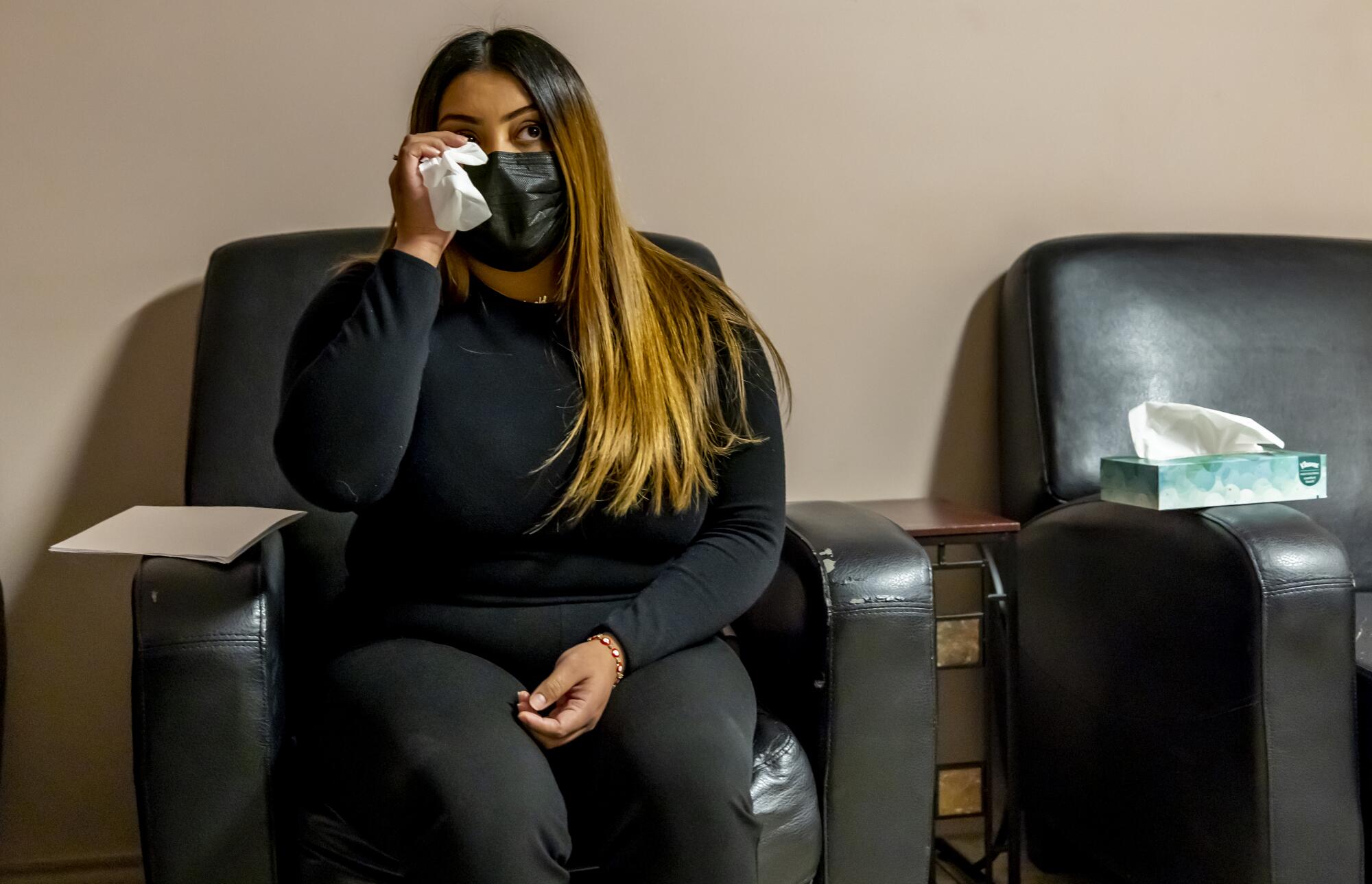
Another patient named Claire explained that she once sold her plasma and pawned her PlayStation and saxophone to pay for an abortion at the clinic.
That was in 2019, after she said she was raped at a party. She was eight weeks pregnant at the time, and it dawned on her that she would have been unable to get an abortion if the new Texas law had been in place.
âIt would have been too late and I would have had to go on out of state,â she said.
Now, at 23, she was back at the clinic â five weeks and six days pregnant, according to her ultrasound.
Claire scheduled an abortion for the next day. It would cost a good chunk of the roughly $1,400 she earns each month as a substitute teacher and part-time health tech.
But she was mostly just glad she caught her pregnancy in time.
âI know thereâs some people who donât even get symptoms right away,â she said. âSo you know they might be too late.
âAnd if theyâre anything like me, either financially or emotionally, they donât have the support. Itâs hard,â she said. âItâs just more pressure. I feel like itâs just taking away more of womenâs rights, their autonomy.â
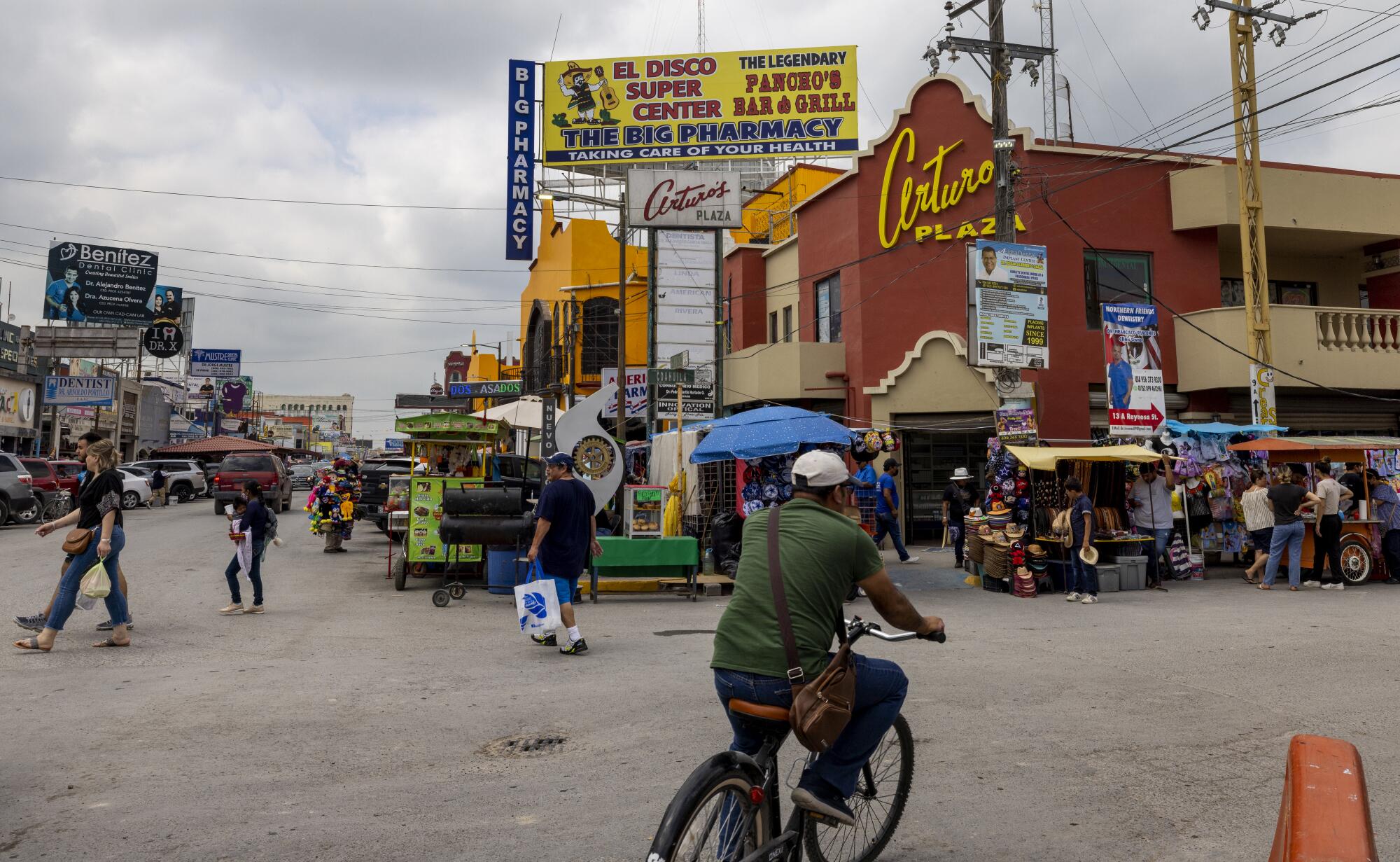
More than a decade ago, Diana Greene Foster, a demographer at UC San Francisco, set out to learn how access to abortion affects the finances of women who turn to abortion clinics like the one in McAllen.
With the help of 30 clinics in 21 states, including the one in McAllen, she interviewed a thousand women who had sought abortions. Some had been able to terminate their pregnancies.
Others had been turned away because they failed to meet state guidelines.
Comparing the two groups years later, Greene Foster found stark differences.
Among those denied abortions, 72% fell further below the federal poverty line â compared with 55% of those who got the procedure. Those unable to obtain abortions were also more likely to declare bankruptcy and get evicted.
âThe economic outcomes are different for a long time,â she said.
The findings left her fearing for the future of low-income women in a nation where abortion is only available in select states.
It is unclear how low-income women would cope with the fall of Roe vs. Wade. Their experience at the McAllen clinic since the Texas law took effect offers some clues.
Texas doctors are performing about half as many abortions, but researchers have found that many women are still having them by traveling out of state or ordering abortion pills online. Abortions among Texas residents are down just 10%.
Zaena Zamora, executive director of the nonprofit Frontera Fund based in the Rio Grande Valley, said the organization helped 40 Texas women travel out of state for abortions in March alone.
âThe request for aid has gone through the roof in the past few months,â she said.
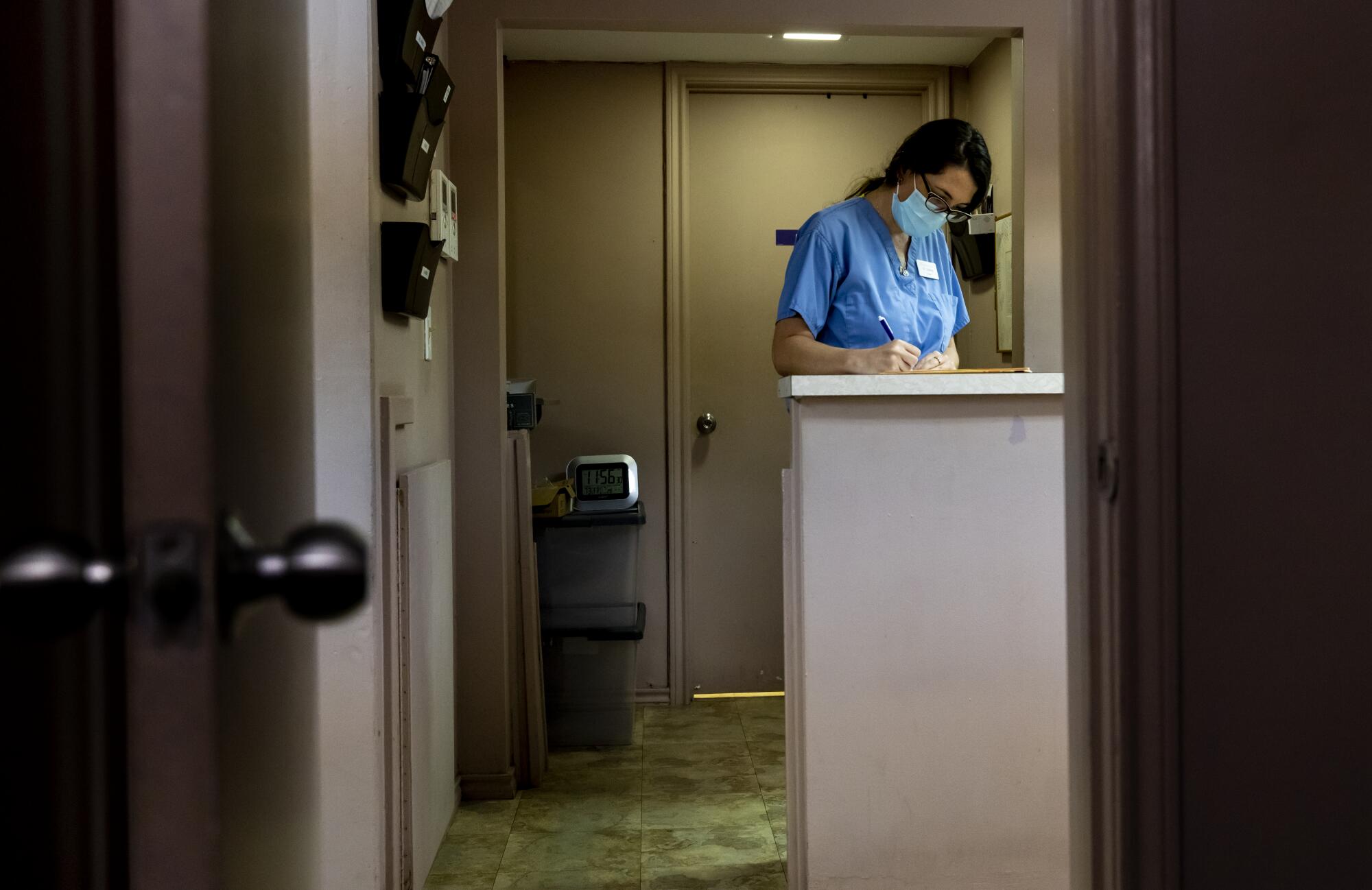
The fund has an annual budget of $500,000 to cover travel and abortion costs, with grants averaging $1,500. But money is only part of the challenge.
âWe had a caller who was taking care of her mother who was ill, she had three children, worked an hourly wage job,â Zamora said. âShe was like, âI canât leave my mother, I donât have anybody to take care of my kids and I canât tell my family why Iâm going.ââ
With travel often booked at the last minute, itâs not always easy to find a flight or an appointment for an abortion. Zamora said itâs hard to imagine how much harder it would get if half the country bans abortion.
âWhatâs going to happen, it terrifies me,â she said. âYouâre forcing people to travel, forcing people into self-managed abortions, forcing people into pregnancies and further into poverty.â
The McAllen clinic, which also provides patients with birth control and testing for sexually transmitted diseases, may expand those services if Roe vs. Wade falls. If it is forced to close, the closest abortion clinic would probably be in Las Cruces, N.M., an 830-mile drive.
Cushing has been helping more patients whose ultrasounds show fetal cardiac activity make appointments there as well as in California, Colorado and Florida.
âDonât even consider Oklahoma and Louisiana right now because theyâre so backed up,â she tells patients.
More of them were heading to Mexico for misoprostol pills and suffering complications, she said, or injections of methotrexate, a drug that hasnât been widely used in the U.S. since the 1960s and can cause birth defects if it fails to end a pregnancy.
Watch L.A. Times Today at 7 p.m. on Spectrum News 1 on Channel 1 or live stream on the Spectrum News App. Palos Verdes Peninsula and Orange County viewers can watch on Cox Systems on channel 99.
Krystal had been pregnant once before, in 2020. She was eight weeks pregnant when she had a medication abortion at the McAllen clinic.
Much had changed since then. She now has a job as a supervisor at Target, earning $19.67 an hour, and recently she got health insurance.
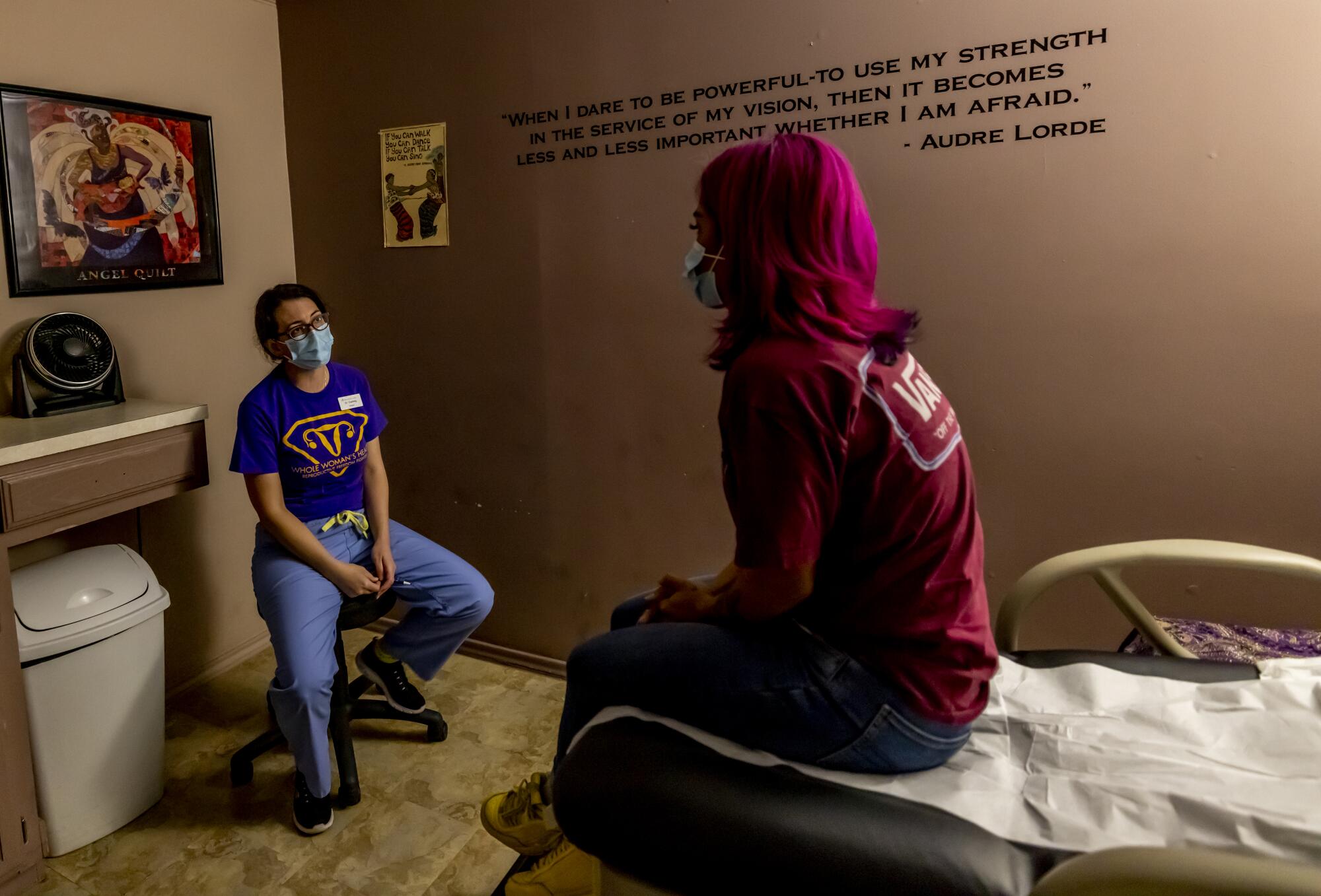
Still, it was a struggle getting to her ultrasound appointment. When she asked supervisors for time off for a doctorâs appointment, they wanted to know why. Uncomfortable telling them, Krystal didnât take time off, working around her appointments instead.
Worried that she had come to the clinic too late, she considered her options. None was very appealing.
Without a passport, she worried about what could happen if she got stopped while crossing the border to bring back abortion medication.
Last month, a Rio Grande Valley woman her age was accused of murder after seeking help at a local hospital for what authorities called a âself-inducedâ abortion after six weeks. She was jailed for several days until local officials â facing a national outcry from abortion rights activists â dropped the charges.
âAm I going to risk going to Mexico?â Krystal asked. âDo I risk having to go to the hospital? Do I risk having to get reported? Like, I might go to jail.â
Cushingâs assistant guided the ultrasound wand over Krystalâs belly.
âBased on your last period, we would be putting your pregnancy to exactly six weeks, zero days today,â the doctor finally reported. âYour ultrasound is matching up exactly with that.â
Most important, there was no fetal cardiac activity.
âSo even with the changes in the law, you do still qualify,â Cushing explained.
Krystal nodded, relieved.
The next afternoon at the clinic, in an exam room with a âKeep Abortion Legalâ sign on the wall, Krystal washed down a mifepristone pill with a glass of water. Then Cushing gave her instructions on how to take the next four pills at home. An abortion fund covered the cost.
âThe next oneâs got to be taken between 24 to 48 hours later, OK, so essentially same time tomorrow,â the doctor explained.
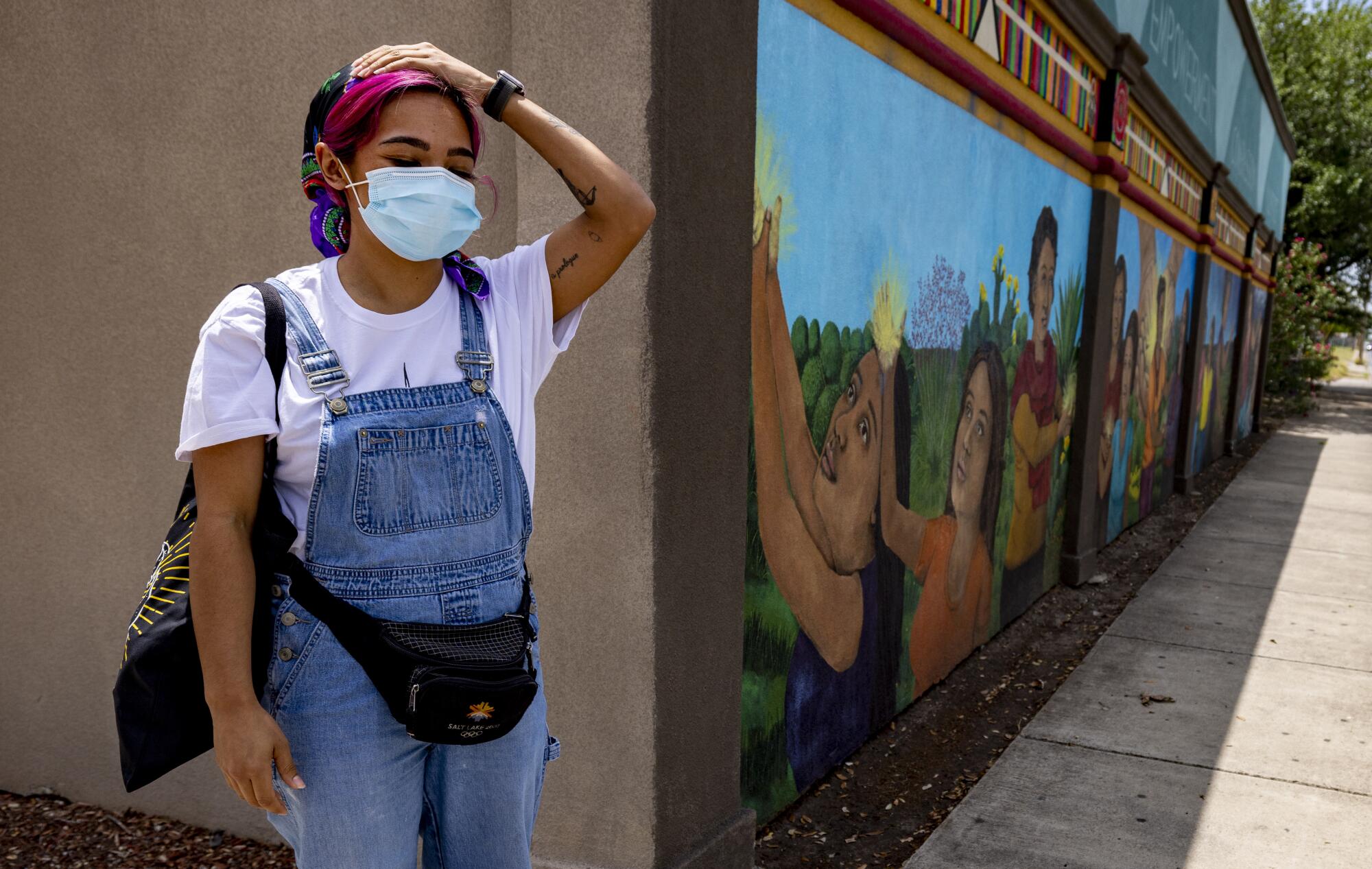
Krystal thanked her and headed for the door.
It was one of 26 abortions Cushing carried out during her most recent visit to the clinic. She had to turn two women away.
The first, a mother of four, said she planned to contact clinics out of state. The second, pregnant for the first time, was seven weeks and one day along.
âI canât travel,â she told Cushing. âI have to keep it.â
More from 'The Future of Abortion'
More to Read
Sign up for Essential California
The most important California stories and recommendations in your inbox every morning.
You may occasionally receive promotional content from the Los Angeles Times.


